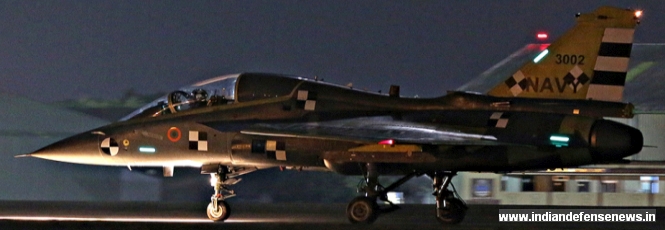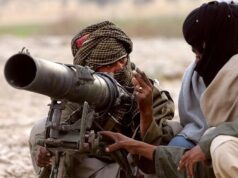TEJAS For Nau Sena Lands on INS VIKRAMADITYA

The Naval prototype of TEJAS fighter has finally landed on INS VIKRAMADITYA. The naval variant of Tejas made its first landing on the air craft carrier on high seas 11th Jan, 2020.
The Indian Navy informed, “The developmental LCA (N) MK1 achieved an important milestone today with the successful Arrested Landing on board the Indian Navy aircraft carrier “. The landing was conducted by Commodore Jaideep Maolankar. After completing extensive trials on the Shore Based Test Facility at Goa, the Naval LCA did an arrested landing successfully.
The single-seat fighter which landed today made its approach to the deck of the carrier at a speed of 128 knots (237 kilometres per hour) relative to the speed of aircraft carrier.
After lowering the arrestor hook mounted onto the rear of the fighter’s fuselage, the prototype of the Tejas (Naval) snagged the third arrestor wire spread across the deck of the carrier. This enabled the fighter to come to a complete halt in about two seconds, safely within the length of the runway. The goal had been to snag the second of the three wires on the ship.
The pilots goal is to snag the second of the three wires on the ship.
“You can call it an anti-climax,” said one of the key members of the team behind the first successful landing of a Tejas fighter jet onto the deck of the Navy’s aircraft carrier.
This was the first landing of a made-in-India fighter jet onto the moving and pitching deck of an aircraft carrier and a validation of several key technologies which have been designed and developed in India over the last 20 years.
“The preparation activity was very thorough,” said the key team as a result of a process of extensive tests on the aircraft before the attempt to land was successfully made.
The team working on the Naval prototype of the Tejas will now land the second prototype, a twin-seat variant, on the Vikramaditya tomorrow and carry out the first takeoffs as well. This will involve the fighters applying full power to their engines before accelerating across the deck of the fighter and leaping into the air off a “ski jump” mounted on the bow of the ship.
Over the next 10 days, the team working on the Naval prototypes of the fighter which has already entered squadron service with the Indian Air Force plan to conduct more than 20 landing and takeoffs from INS Vikramaditya.
“The learning curve has been massive. We knew so little in September compared with what we now know,” said one of the team members who participated in today’s trials.
The Naval variant of the Tejas is a modified and heavier variant of the Tejas being inducted into the Indian Air Force. It features a heavier undercarriage to enable it to cope with the massive pressures associated with landing on the short deck of an aircraft carrier. Over the last several months, the team has been carrying out tests at a shore-based facility in Goa which replicates the deck of INS Vikramaditya. “Given the favourable winds we had today, it was somewhat easier to land on the carrier than it has been to land at the shore based facility in Goa,” the team member said.
The aircraft tested today is only a technology demonstrator. So it does not have the engine thrust (power) required for it to carry a meaningful weapons payload when deployed on the deck of an aircraft carrier. The tests now being conducted are meant to test whether a host of systems designed specifically for operations off an aircraft carrier function effectively and are reliable.
Soon a substantially larger, twin engine variant of the Tejas being designed by Hindustan Aeronautics should be landing INS VIKRAMADITYA and INS VIKRANT.




